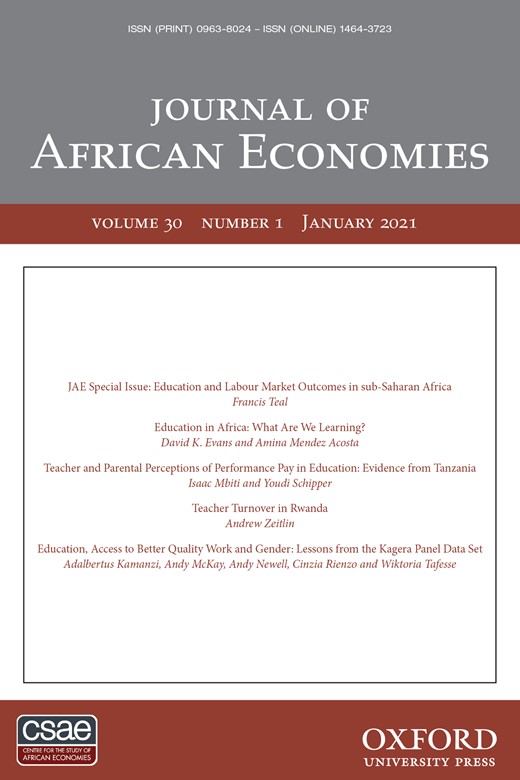-
Views
-
Cite
Cite
Andrew Zeitlin, Teacher Turnover in Rwanda, Journal of African Economies, Volume 30, Issue 1, January 2021, Pages 81–102, https://doi.org/10.1093/jae/ejaa013
Close - Share Icon Share
Abstract
Despite widely documented shortfalls of teacher skills and effort, there is little systematic evidence of rates of teacher turnover in low-income countries. I investigated the incidence and consequences of teacher turnover in Rwandan public primary schools over the period from 2016 to 2019. I combined the universe of teacher placement records with student enrollment figures and school-average Primary Leaving Exam scores in a nationally representative sample of 259 schools. Results highlight five features of teacher turnover. First, rates of teacher turnover are high: annually, 20% of teachers separate from their jobs, of which 11% exit from the public-sector teaching workforce. Second, the burden of teacher churn is higher in schools with low learning levels and, perhaps surprisingly, in low pupil–teacher-ratio schools. Third, teacher turnover is concentrated among early-career teachers, male teachers and those assigned to teach Math. Fourth, replacing teachers quickly after they exit is a challenge; 23% of exiting teachers are not replaced the following year. And fifth, teacher turnover is associated with subsequent declines in learning outcomes. On average, the loss of a teacher is associated with a reduction in learning levels of 0.05 standard deviations. In addition to class-size increases, a possible mechanism for these learning outcomes is the prevalence of teachers teaching outside of their areas of subject expertise: in any given year, at least 21% of teachers teach in subjects in which they have not been trained. Taken together, these results suggest that the problem of teacher turnover is substantial in magnitude and consequential for learning outcomes in schools.




